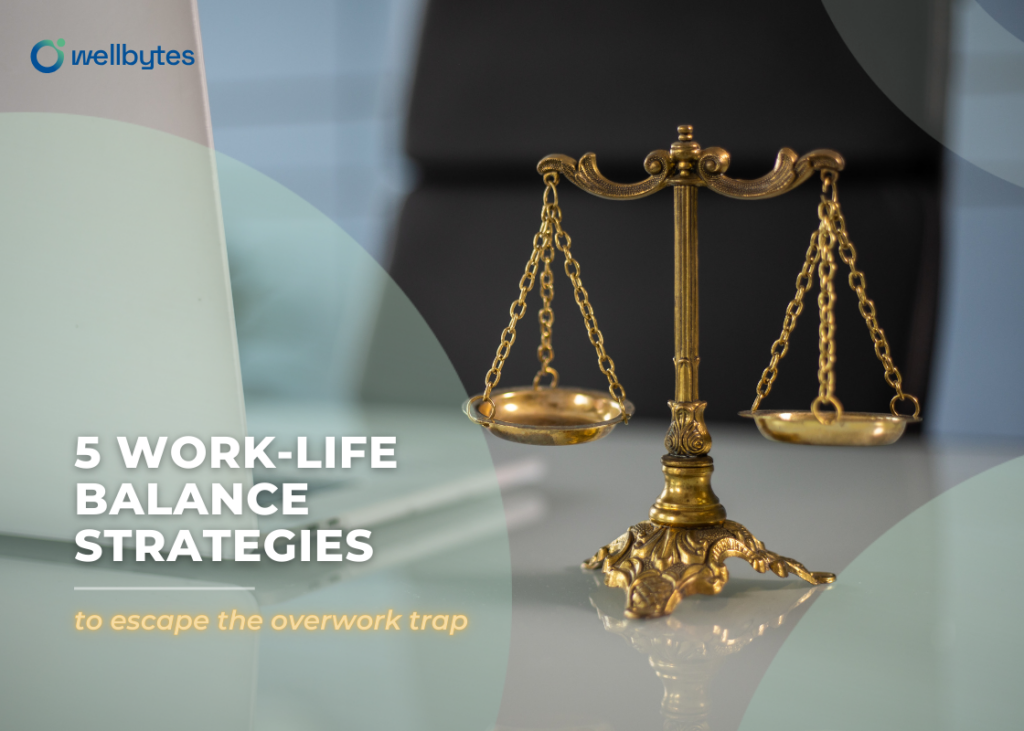In today’s fast-paced world, finding the right work-life balance strategies is more critical than ever. The rise of remote work, digital connectivity, and increasing workplace demands have blurred the lines between professional and personal life, leaving many employees feeling burned out and exhausted. But achieving a better balance isn’t just about working less – it’s about working smarter and ensuring your well-being remains a top priority.
If you’re constantly caught in the cycle of overwork, it’s time to break free. Here are five work-life balance strategies to help you regain control, improve productivity, and enhance your overall well-being.

1. Redefine productivity: Quality over quantity
One of the most common misconceptions about productivity is that working longer hours equates to getting more done. However, research consistently shows that overworking leads to diminished returns, increased stress, and decreased job satisfaction. Instead of focusing on how much time you spend working, shift your focus to high-impact tasks and effective time management.
How to implement this strategy:
- Use productivity techniques like the Pomodoro technique or time blocking to maximize efficiency.
- Set clear priorities at the start of each day to tackle the most important tasks first.
- Learn to say no to unnecessary meetings and distractions that take away from meaningful work.
2. Set boundaries and stick to them
With constant email notifications, work chats, and never-ending task lists, it’s easy to let work bleed into personal time. However, setting firm boundaries is one of the most effective work-life balance strategies for maintaining mental clarity and avoiding burnout.
How to set boundaries effectively:
- Define clear work hours and communicate them with your team.
- Disable work notifications outside of office hours to resist the urge to check emails.
- Create a dedicated workspace to mentally separate work and home life.
3. Leverage health spending accounts (HSAs) for well-being
Many employers offer Health Spending Accounts (HSAs) as part of their benefits package, but not all employees take full advantage of them. HSAs can be a powerful tool in supporting work-life balance by covering a range of wellness expenses, from mental health therapy to alternative treatments like massage therapy or acupuncture.
How an HSA helps with work-life balance:
- Covers mental health services provided by licensed professionals, including eligible therapy sessions.
- Provides access to preventative care, reducing stress-related health issues.
- Encourages employees to invest in self-care through wellness programs.
By utilizing your HSA, you can prioritize your well-being without worrying about the financial burden.
4. Embrace flexible work arrangements
Rigid work schedules are a thing of the past. Companies are increasingly recognizing the benefits of flexible work arrangements, whether through remote work, hybrid schedules, or customized hours. If you feel trapped in the cycle of overwork, negotiating flexibility can be a game-changer.
How to integrate flexibility into your work-life balance:
- Discuss hybrid work options with your employer if fully remote work isn’t possible.
- Adjust your schedule to work during your peak productivity hours.
- Take advantage of compressed workweeks or job-sharing opportunities.
5. Prioritize rest and recovery
Burnout often stems from the failure to disconnect and recharge. True productivity doesn’t come from working harder but from balancing effort with rest. Studies show that employees who take regular breaks and prioritize rest perform better over time.
How to make rest a priority:
- Schedule breaks throughout the day to reset your focus.
- Ensure you get adequate sleep, as it directly affects performance and well-being.
- Use vacation days without guilt – time off leads to greater creativity and efficiency.
Take control of your work-life balance
The reality is, escaping the overwork trap requires intentional action. By applying these work-life balance strategies, you can create a healthier, more sustainable approach to both your career and personal life. Whether it’s setting boundaries, leveraging Health Spending Accounts (HSAs), or embracing flexibility, the key is to find what works best for you.
At Wellbytes, we believe that employee well-being should be a top priority. Discover how our solutions, including Health Spending Accounts (HSAs), can support a better work-life balance for you and your team.
More about us!
More about our products.
